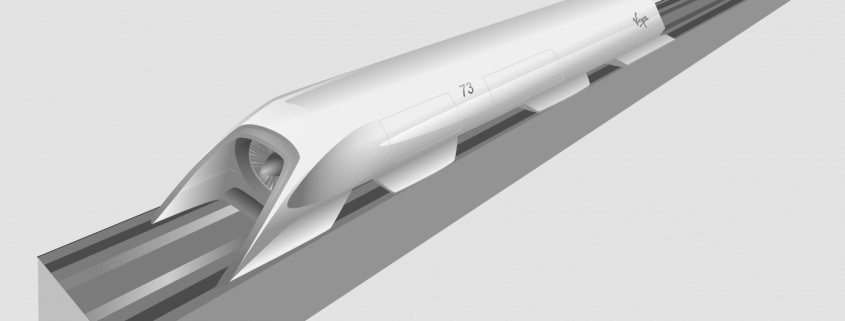USC Hyperloop hopes to win competition this weekend
The USC Hyperloop team has been staying busy trying to perfect their presentation for the judges at the SpaceX Hyperloop Pod Design Competition at Texas A&M University this weekend.
The SpaceX Hyperloop competition is a significant milestone in the race to make Hyperloop — a conceptual high speed transit system that billionaire entrepreneur Elon Musk calls a potential “fifth mode of transport” — an increasingly believable reality. Three years ago, when Musk released a whitepaper on the SpaceX website that outlined plans for a revolutionary new transit system, many believed that it was an idea out of science fiction that would not see the light of day for generations to come.
The Hyperloop is a 28-passenger pod that rides on a cushion of air inside a vacuum sealed tube and can reach a top speed of 760 miles/hour. This means that the 6-hour drive from Los Angeles to San Francisco will take no longer than 30 minutes in a pod that has been pressurized to limit the effect of G-forces so that the journey will be as comfortable as flight.
Multiple startups have amassed millions of dollars in investments for the sole purpose of creating the world’s first functioning Hyperloop.
So, when SpaceX announced a competition to design and build a half-scale Hyperloop system, more than 100 student engineering teams from 20 countries responded.
Last November, USC Hyperloop was not only invited to present their designs at the SpaceX Design Weekend starting this Saturday, but also nominated to try out their finished pods on the SpaceX Hyperloop track during the final competition in June this year.
The 24-person team was formed by Alexander Declue, a sophomore majoring in astronautical engineering. Declue started his research as soon as the competition was announced last June. Declue said he was attracted by the innovative concept of Hyperloop.
“High efficiency, low costs and blazingly fast speeds,” Declue said.
Declue said his team is also driven by its belief in the project.
“Our team is somewhat unique because this is an extracurricular activity for all of our members,” Declue said. “Our members choose to work on this project because they are adamant believers in the concept and crave the hands-on, fast-paced engineering experience that these competitions offer.”
As with any extracurricular, he recalls that his biggest challenge as project manager was to find students that were skilled and committed to the project. Declue said the project leads meet three to four times a week and communicate constantly.
After months of intense work, the team will finally learn if their designs are among the strongest at the competition at Texas A&M Friday and Saturday. Hyperloop Technologies Inc. even upped the ante when they recently announced that they would offer $150,000 in prize money to the teams with the strongest designs.
For Declue and his team, the money would be a validation of their efforts and would mean that they would not need to crowdfund to meet their budget goals for their prototype pod construction.
The finished Hyperloop system is estimated to cost $6 billion, a fraction of the $68 billion that the state has pledged to the development of the high-speed rail system.
Declue said he counts himself lucky to have found a team of such great people. Though the current team exists only to compete in the SpaceX competition, if there is demand, he would be more than willing to take on a new project next year.
The SpaceX Design Weekend will take place from Jan. 29-30 at Texas A&M University.

